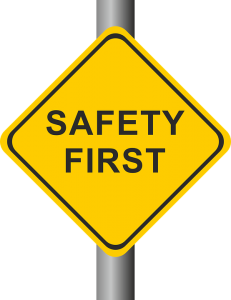Pellet stoves have become very popular over the past few years. Their eco-friendliness, heating efficiency and affordability have made them preferable for many homeowners. In some areas, demand has even outgrown the availability of this amazing home heating alternative. The popularity can be attributed to the great features these stoves offer. However, these stoves also bring concerns about carbon monoxide production.
What Is Carbon Monoxide?
Carbon monoxide is a colorless, odorless toxic gas produced when fuels such as oil, natural gas, coal, kerosene, charcoal, and wood do not undergo complete combustion. When the gas is released in an enclosed environment, such as homes, the gas can be deadly. Breathing in carbon monoxide damages a person’s body by decreasing the percentage of oxygen in the bloodstream. Over time, the shortage of oxygen makes cells die, and some vital organs, such as the heart and brain, shut down. The gas is particularly extremely harmful to infants, unborn babies, children and the elderly.
Do Pellet Stoves Give Off Carbon Monoxide?

Carbon monoxide poisoning is a matter of concern to people using fossil fuels and biomass to heat their homes. This means that pellets stoves are no exception. These stoves produce carbon monoxide, especially if the pellets were not stored correctly or the stoves’ ventilation is not appropriate. In most cases, it is the nature of the pellets that results in the production of carbon monoxide.
Wood and biomass pellets used in pellet stoves are stored in a large sealed tank/hopper. This hopper is connected to the stove or mounted over the stove to enable gravity feeding. Due to the enclosed design of these hoppers, oxygen can be depleted. When this happens, a toxic environment that contains carbon monoxide can easily be formed. This can be linked to auto-oxidation processes that happen in wood, especially due to the presence of fatty acids. Tests have been done to measure the amount of carbon monoxide produced and the results have shown that the amount can be life-threatening.
Factors Affecting The Production Of Carbon Monoxide In Pellet Stoves
- Temperatures-As the temperatures rise, the chances of carbon monoxide production rises. This means that the gas emissions will be higher when the stove is producing very high temperatures.
- Pellets age-Ever wondered why it is advisable to use pellets that were manufactured more than six weeks prior? Research has shown that pellets produce more carbon monoxide in their first six weeks of manufacture.
- Wood type-Different trees have different amounts of fatty acids. In pine, there are more unsaturated fatty acids than you will find in spruce. This is the reason why pine tends to produce more carbon monoxide than spruce.
Pellet Stoves And Carbon Monoxide-How To Be Safe
The lessons on pellet stoves and carbon monoxide cannot be done and dusted without understanding how to prevent carbon monoxide poisoning. There are some safety tips that one needs to know even before buying the stove. These are the steps that involve installation, operation and management of pellet stoves. Here are some of the tips you can follow to avoid carbon monoxide poisoning:
- Ensure that the pellet stove you are purchasing meets the recommended standards and guidelines. This should be combined with professional installation and inspection.
- Invite a professional to check the pellet stove at least once per year. This can be the same person who does the maintenance such as the removal of soot and creosote.
- Call a professional to check the stove if you notice any unusual odor. Defects and malfunctions may be one of the signs that the stove is producing carbon monoxide.
- Do not use the stove in enclosed areas such as the garage, cabin, tent or camper if the stove is not designed for such an environment.
- Use carbon monoxide alarms. Carbon monoxide is colorless and odorless. This means that you cannot detect it with ease. The low-cost alarms will reduce the chances of illness or death. In fact, this is a requirement by law for single family homes in California that have installed fuel-burning heaters.
- Install range hood fans. It is important to have exhaust fans that vent to the outdoors. The size of the fan will be determined by the size of the stove. Be careful not to get the wrong size as this would result in back drafting.
- Understand the signs of carbon monoxide poisoning. You may have all the measures in place, but if you do not know what signs to look out for, you may still succumb to the deadly gas. Some of the symptoms that have been linked with carbon monoxide poisoning include sleepiness, dizziness, chest tightness, confusion, nausea, headaches and shortness of breath. When such symptoms are experienced when the stove is running, you need to get outside for some fresh air. Open all the doors and windows to allow oxygen into your house.
The issue of carbon monoxide poisoning is a matter of great concern to any pellet stove owner. This stove is an excellent way of keeping your home warm, but if not handled properly, it can be fatal. Therefore, always ensure that you are giving the stove the attention it deserves. Have it installed correctly and incorporate the necessary venting procedures. This way, you will be sure of a safe home for you and your family.












